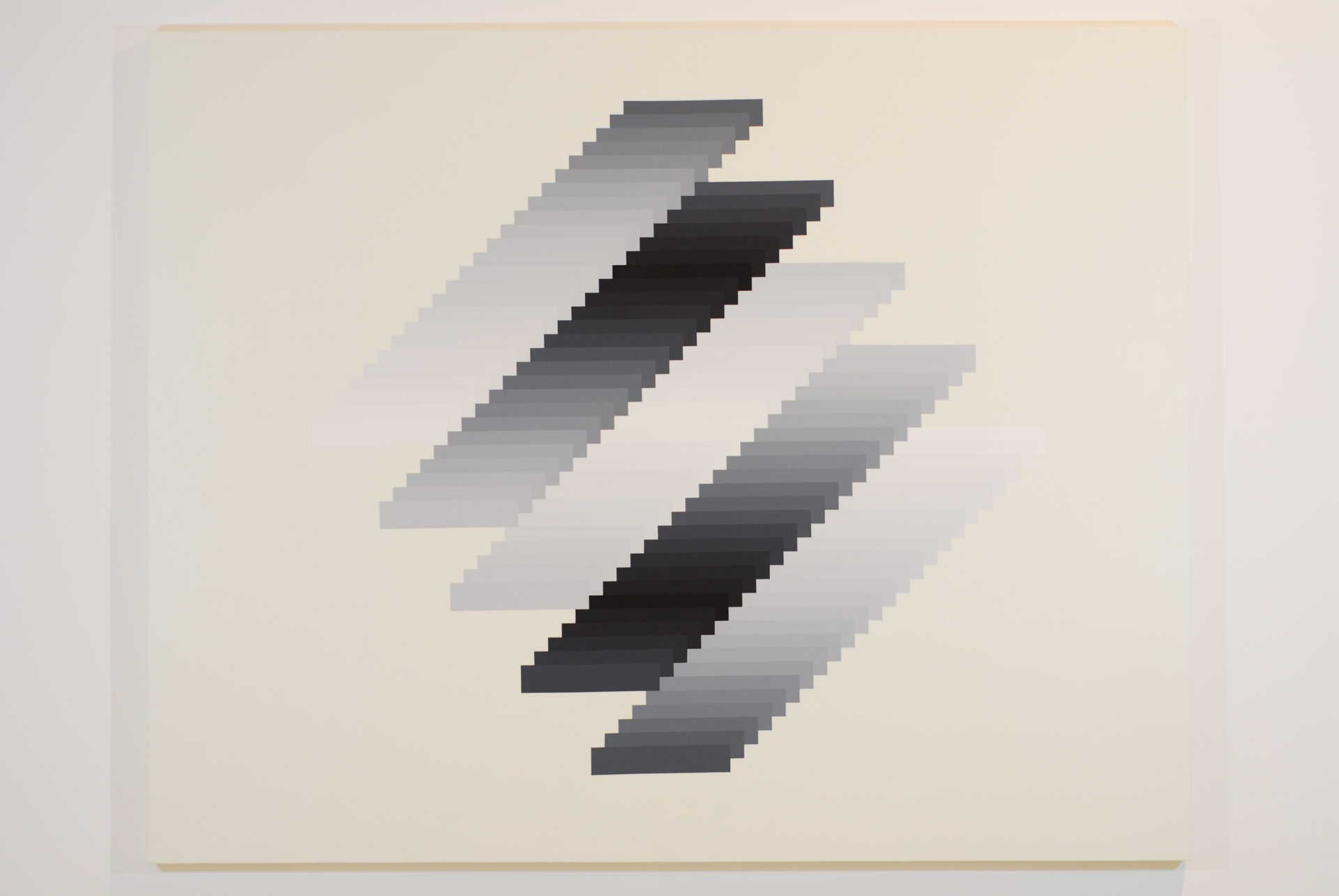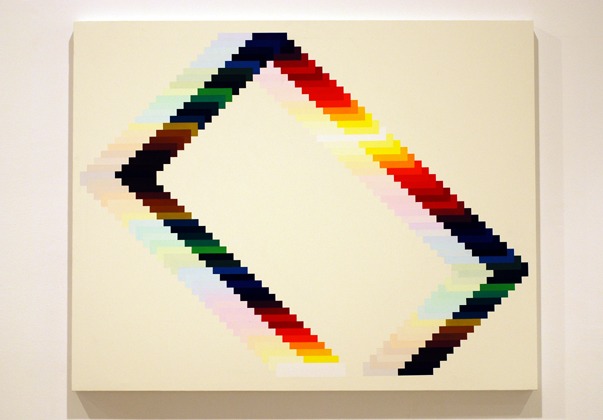ONE DAY EVERY WALL WILL FALL
“One day every wall will fall: Select Chronology of art and politics after 1989” * is the starting point for the construction of a chronological map, which introduces Mafalda Santos’ exhibition at Galeria Presença.
This chronology, carried out in 2005, makes a restricted selection of world political and cultural events that marked Europe after the fall of the Berlin Wall, in an attempt to establish a parallel between the development of globalization and the growth and evolution of international biennials and exhibitions. large scale around the world.
“Irgendwann fällt jede Mauer” (translated into English: “One day every wall will fall”) was graffiti on the Berlin wall before its fall in 1989, as if prophesying the ruin of so many other walls: of communism, of apartheid, with national borders,… In the same year, the World Wide Web was created, by Tim Berners-Lee, while working at the European Organization for Nuclear Research in Switzerland: the “World Wide Web” that would radically alter the global conception of space, time and access to information.
The Internet, as it would come to be called, finally broke down all borders, viewing the world not only in a linear way but in a network.
The works, which are presented at Galeria Presença, probe these new territories and explore the notion of interface as a new window on the world. Appropriating the figure of the color sample from the Fine Arts paint catalog (in a narrower dialogue like the field of Painting), the works play with questions related to the visualization and behavior of elements in a digital interface and the space and borders that virtually define. The pictorial compositions emulate the organization of the different items on a screen, in sequences that mimic a cascading visualization, the movement of a “screen saver” or the reading of a “scroll”, which extends like a map of an extensive territory yet to be mapped .
* in “The Manifesta Decade-Debates on Contemporary Art Exhibitions and Biennials in Post-Wall Europe”, A Roomade Book, MIT Press 2005
BEYOND THE WALL, GISELA LEAL
article by Gisela Leal, Artes &Leilões, November 2009
The current exhibition by Mafalda Santos at Galeria Presença, in Porto, arises initially from the explicit reference to a text that proposed to unveil and map the main international exhibitions of great scope, since the fall of the Berlin Wall, alongside the main political events that have taken place since that same year in 1989 (“The Manifesta Decade”, MIT Press, 2005). The artist, not surprising by the process of developing a discourse – because it is consistent with the language she has been using in her works since the first expository steps – adds with this work a new aspect to her procedural and approach scope: the relationship between the universe artistic (and no longer just the location) and recent world history.
Rescuing the title to the essay that serves as a starting point for the exhibition, “One Day Every Wall Will Fall” clearly places us in a historical period where the questioning and redefinition of borders – whether geographic, ideological or commercial – has been conditioning political reorganization from Europe. As a record of the world’s heart rate over the past 30 years, the two screens at the entrance to the exhibition summarize in an apparently simple approach the complexity of the world organization. Perhaps the main point of interest of this work is located here: the attribution of an imaginary linearity as if it contradicts – even opposing – the nonlinearity that serves as an assumption for information organization systems in the contemporary world.
But there are simultaneously other boundaries that we are dealing with here, and in these, the representation of the non-linear assumes another importance: they are the boundaries of access to information and the organization of individual knowledge, corresponding to the same chronological period under analysis at the moment when it was created (also in 1989) and the most famous information network is being developed: the world wide web.
From the representation of the historical real to that of the virtual, Mafalda Santos then proceeds, using the figure of the color sample of a paint catalog, to represent the organization of the virtual space. In this new universe, where universal knowledge crosses and condenses the potential of individual development, the layers of information are compressed into folders that, by the artist’s hand, are now represented by movement within their own representational space – the screen. Now in acrylic on canvas, these folders and the movement they reproduce suggest an exploration of the dissipation of boundaries in access to information.
In the final work, there is a kind of return to the starting point of the exhibition (the calligraphy on the first two screens is now replaced by a stamp). In Down Scroll, a large drawing that extends across the floor from the wall, human effort is represented by a labyrinthine path, the same that each man draws in his individual process of adaptation to a system of networks and sedimentation of the their own knowledge: the inevitability of error is accompanied by a gradual spacing of action.
HISTORICAL AWARENESS, ÓSCAR FARIA
article by Óscar Faria, Jornal Público, November 13, 2009
Between abstraction and reality, the new exhibition by Mafalda Santos, in Porto
Mafalda Santos (Porto, 1980) was one of the programmers at PêSSEGOpráSEMANA (2002-2007), one of the spaces managed by the most active artists in Porto. It is from this collective, independent context, of which many other structures are part, that the artist’s work asserts itself, a trait also common to many names of her generation. There, in the space of an old house on the street of Antero de Quental, he held, in 2004, his first individual exhibition, a show formed by large paintings, in which reticles or networks were observed, drawing a kind of topography of a anonymous, abstract terrain – this structure is at the basis of the intervention you carried out within the scope of the collective “7 Artists at the 10th Month” (Fundação Calouste Gulbenkian, Lisbon, 2005).
The way the world can be read from your networks – social, affective, professional, etc. – or genealogies and the way they tend towards a labyrinthine scheme have been recurrent subjects in the work of Mafalda Santos. As part of a group organized by PêSSEGOpráSEMANA in the exhibition halls of Maus Hábitos, a bar located in downtown Porto, the artist presented “BlackBoard” (2005), a kind of black screen she signed up for, using as a model the organization by folders used in computers, the protagonists, events, places and publications of the independent scene in Porto, setting posterity at a time unparalleled in the country – this situation, which began around 1999, continues to be prolonged in several projects, such as A Sala, A Certain Lack of Coherence and the most recent Foundation.
The reconversion into painting of a figure, the folder, provided by computers in order to facilitate the organization of documents, immediately points to the need for the artist to visualize in the same plane, in extension, something that aims to occupy the minimum space on a screen. The confrontation with the complexity of the real, hidden by the structure, is given by the pictorial, the way found by Mafalda Santos to apprehend the world, to read it in its duration and not instantly. By making a general outline visible – in the case of “Ambiente de Trabalho”, a 500 × 340 cm mural made within the scope of the Terminal project (Fundição de Oeiras, 2005), this materiality was particularly enlightening of the existing networks in the national artistic context – , the author highlights the difficulty in dealing with this situation, since what is given by the drawing is only an abstraction of events inscribed in time: there is only a surface made up of shapes and names.
In “Too Loud a Solitude”, another mural made at Mad Woman in the Attic (Porto, 2006), Mafalda Santos organizes the folders, the archive, no longer according to a “tree” type scheme, but through the suggestion of the movement that they could do it as “screen savers”, leaving the trail of the screen behind them – they also organized the installation with another type of visual construction, in which each folder with a name hid behind a succession of others, however, even in this case, they never crossed with another set, contrary to what happened before with networked schemes.
In the current exhibition, Mafalda Santos extends her previous experiences. Thus, in “One day every wall will fall” he proposes a work in which, on a previously established grid, a chronology is observed that puts political facts in parallel with international exhibitions held after the fall of the Berlin wall in 1989. Formally situated between the abstraction given by a succession of thin vertical lines – in a progressive scale of gray tones – and the handwriting that names the facts taken from the book “The Manifesta Decade” (MIT Press, 2005), this work serves to make clear how the phenomenon of the biennials has gone global in the last two decades, a period of time also associated with the birth and expansion of the World Wide Web, a kind of new planetary frontier. The historical awareness produced both by the production and by the observation of this painting – constituted, in fact, by two canvases – is also a fact to be taken into account in its analysis: the facts described in it leave out many more, however, this point of view view can be seen as the beginning of other investigations focused on the period in question. In the other works presented at the Presença gallery, Mafalda Santos appropriates catalogs with color samples for a series of works – “1/4 Saved”, “2/4 Saved”, etc. – where the contradiction, the paradox, between what is represented is visible – “(…) a cascade view, the movement of a” screen saver “or the reading of a” scroll “” – and the medium used for the representation , painting, considered obsolete in relation to new technologies. The exhibition, with an effective assembly, ends with “Down scroll”, extensive drawing (950 × 150 cm), carried out using a stamp. Here, in the face of this nameless maze, made by the incessant repetition of a gesture on a sheet of paper, a plastic difference again emerges, a distinction anchored in a traditional practice; even if it is of a mechanical nature, as is the case – one feels the presence of the human touch, of the imperfection generated by a body in action. And it is also here that an inexhaustible territory opens up, in which apparently distant realities – computers, the paint trade – intersect on a canvas, displacing the senses in order to create other singularities, a world without borders.


















